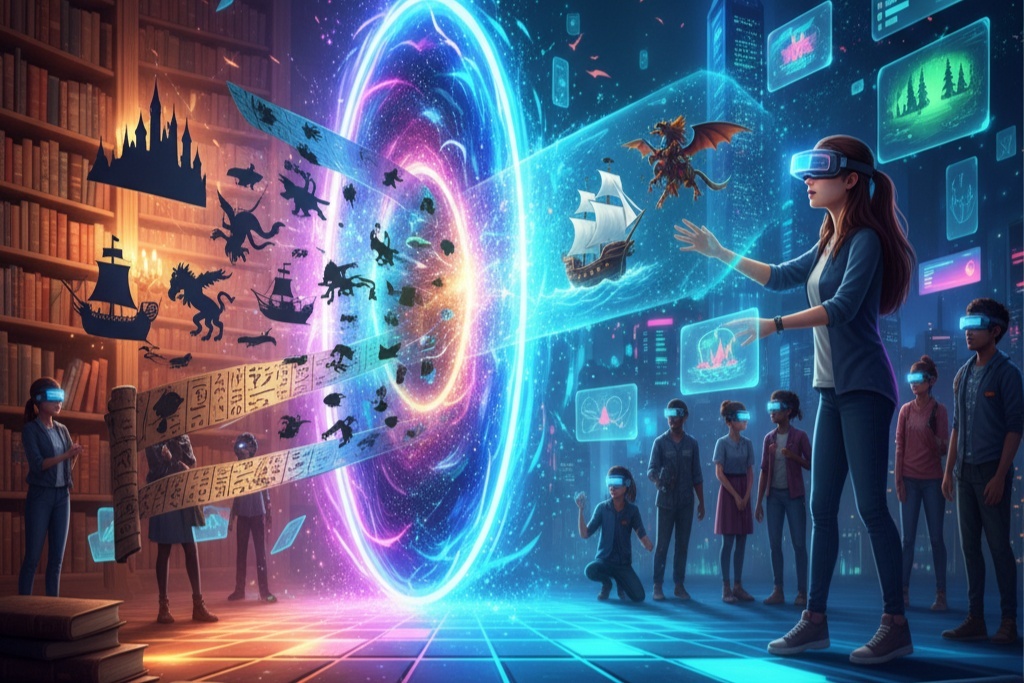For centuries, stories have lived on flat surfaces - pages, screens, and panels. But storytelling is evolving again. With the rise of AR (Augmented Reality) and VR (Virtual Reality), creators should start to explore new ways to bring stories off the page and into the new dimension.
What happens when a reader can step inside a comic book, manga or any other narrative? When a scene from a novel can unfold right in your living room? That’s the promise of spatial storytelling - and it’s transforming how we imagine, create, and experience narratives.
The Shift from Flat to Spatial
Traditional storytelling has always relied on imagination to bridge the gap between the story and the reader. But now, technology allows creators to build fully immersive worlds that surround the audience.
Instead of reading about a fantasy realm, you can walk through it.
Instead of viewing a comic panel, you can stand beside the characters.
This doesn’t replace them — it extends them. It turns storytelling into something you can experience rather than just observe.
Why AR and VR Are the Next Frontier
The immersive content market is exploding. According to Global Growth Insights, the AR/VR market (hardware + software) is projected to grow from USD 127.73 billion in 2025 to an astonishing USD 1.75 trillion by 2033.
This massive expansion isn’t just about gaming or tech — it’s about how we interact with stories.
As AR devices become lighter, cheaper, and more accessible, creators will have the chance to translate 2D stories — novels, comics, mangas, even scripts - into interactive, spatial experiences.
Imagine:
-
A comic where each panel opens a 3D scene around you
-
A fantasy novel where you explore the castle instead of reading about it
-
A children’s story where characters appear on your desk through AR
It’s not just storytelling anymore - it’s storyliving.
Challenges in the Transition
Moving from flat to spatial isn’t as simple as porting visuals into 3D.
Creators must rethink how perspective, pacing, and emotion work in immersive formats.
For instance:
-
How do you guide the audience’s attention when they can look anywhere?
-
How do you keep emotional rhythm when scenes unfold interactively?
-
How do you keep a balance between creator control and user freedom?
The transition requires new creative thinking — a blend of writing, design, and interaction.
How Platforms Like Big Tale Make It Possible
Traditionally, building AR/VR experiences required coding and 3D design skills. But that’s changing.
Platforms like Big Tale are making immersive storytelling accessible to everyone. Creators can adapt their books, comics, or story ideas into interactive 3D environments — without coding, engines, or complex tools.
It’s the natural evolution of storytelling:
From words → to images → to multiverse.
The Future of Storytelling Is Spatial
Just as the printing press transformed literature and video changed cinema, spatial storytelling is opening a new creative era.
By merging the emotional depth of traditional stories with the interactivity of AR/VR, creators can build experiences that audiences don’t just consume — they inhabit.
The storytellers who embrace this shift early won’t just be part of the future — they’ll create it.

